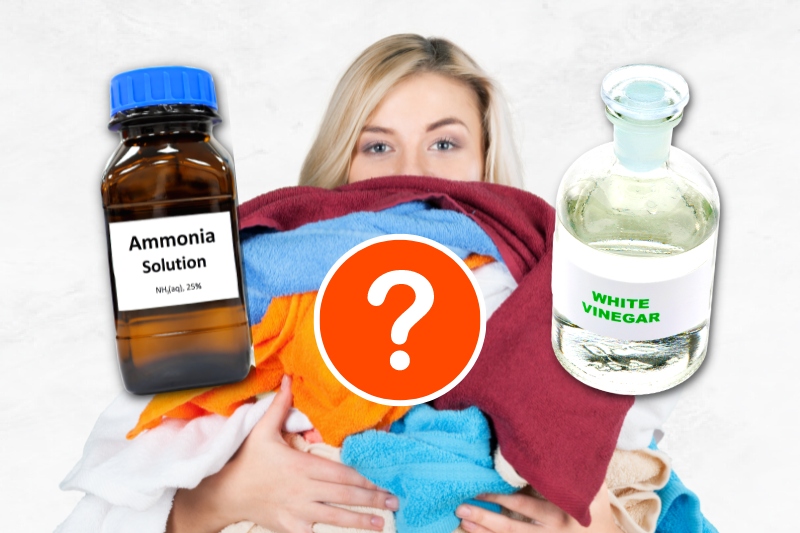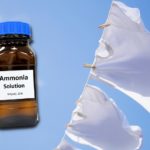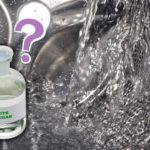When it comes to doing laundry, we all want to use products that are effective and safe for our clothes.
Two popular and widely debated options are ammonia and vinegar. These two multi-purpose household cleaning products both have their pros and cons.
The right one for you will depend on what you want to achieve. From banishing odours and lifting stains to softening rough fabrics, read on as we compare ammonia vs vinegar for laundry.
Why Do People Use White Vinegar in Laundry?
White vinegar is an affordable, non-toxic cleaner that offers a host of benefits for cleaning clothes.
Its mild acetic acid solution is safe for most fabrics and it can be diluted with water for more delicate materials.
Here are some common uses for vinegar in laundry:
1. To soften fabrics naturally
If you find fabric conditioner irritating or that it leaves a waxy layer on your clean laundry, look no further.
White vinegar is a great natural alternative to chemical fabric softeners. Just add ½ cup of vinegar to the drawer of your washing machine in place of fabric conditioner.
It will then get to work during the rinse cycle, softening your clothes and reducing any static too.
2. To remove product buildup
Linked to the above, swapping fabric softener for white vinegar will help to remove detergent and conditioner residue. This is especially noticeable on towels, which end up feeling less absorbent and even scratchy over time.
You may also spot a slight sheen on the fibres. Again, just ½ cup of vinegar should be enough to break this down and restore their fluffiness.
3. To remove stains

Wondering whether vinegar is capable of removing stains? The answer is yes. Admittedly, it isn’t as powerful as alkaline cleaners for tackling stains left by organic substances.
With that said, just like lemon juice, vinegar is acidic in nature and will still help to remove grime.
It is particularly effective on hard-water and soap scum deposits, rust and mildew stains. Read our article on how to use vinegar for stain removal for dilution tips and the best methods to try.
4. To eliminate odours
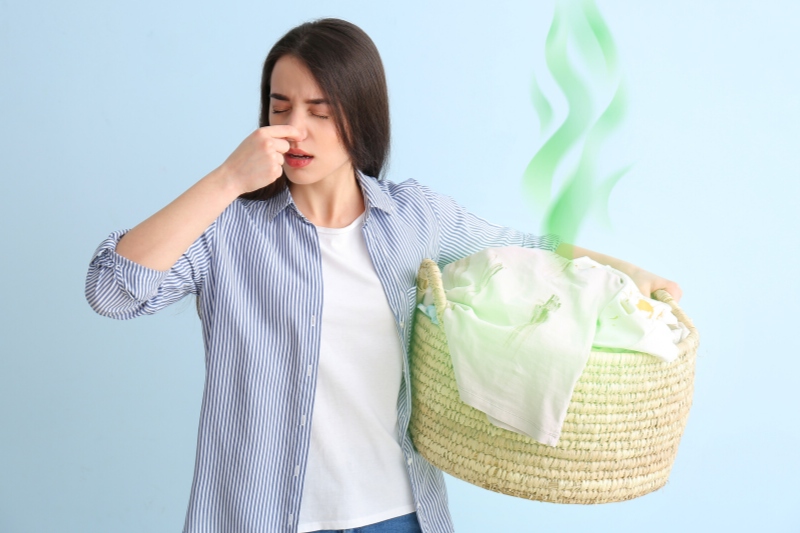
Given its natural cleaning power and ability to remove product buildup, vinegar is also great for ridding clothes of bad odours.
Whether you’re dealing with engrained sweat or an unpleasant musty smell, adding 1 cup of vinegar per load should help. And while the vinegar smell shouldn’t linger, you can always run another rinse cycle for peace of mind.
Applying a fresh-smelling linen spray made with essential oils after washing is another great option.
5. To brighten clothes and prevent fading
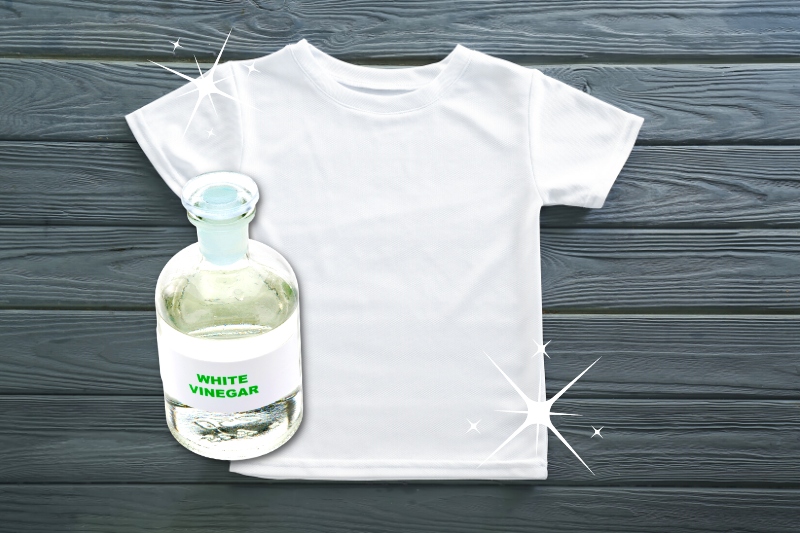
You can also stop your favourite dark jeans from fading and revive dull whites with vinegar too!
To lock in the dye and minimise the risk of fading, soak the item overnight in a 50:50 vinegar and water solution. Hang to air dry, then launder as normal.
To brighten whites that look a little grey, bring a large pot/pan of water with 1 cup of white vinegar to the boil. Turn off the hob, submerge the garment and leave to soak for at least 8 hours before washing.
Is Ammonia Good for Washing Clothes?
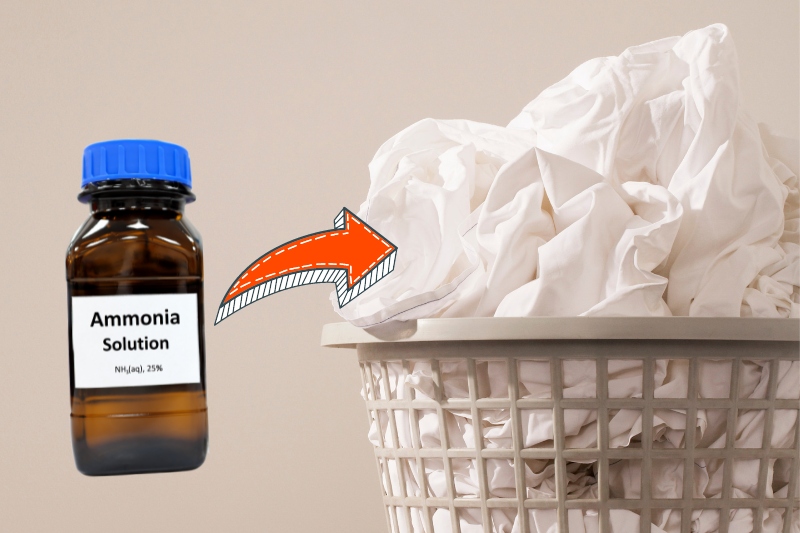
Alternatively, you can use ammonia for laundry.
In contrast to vinegar, this tough household cleaner has a strong alkaline base. As such, it’s ideal for cleaning up organic spills on fabric. These include food proteins, grease and fat, blood and grass stains, that can be hard to shift with milder vinegar.
Ammonia is gentler than bleach and can be used safely on colours.
Just like vinegar, ammonia can break down the oily residue leftover from detergent buildup. Adding ½ cup to the wash with your detergent will also boost cleaning power and restore your whites.
Ammonia is surprisingly effective at banishing smells too, despite being very pungent itself! But you will need to run an extra rinse cycle to ensure it’s all washed away.
The downside to using ammonia is that it can be hazardous if used incorrectly. It must be diluted properly before use and it cannot be used on delicates like silk and wool.
This is because they’re made of natural proteins that its chemical formula will eat away at.
You’ll also need to use ammonia in a well-ventilated area and avoid getting it on your skin.
Additionally, be sure to check that your detergent doesn’t contain bleach – often listed as chlorine or sodium hypochlorite – before combining the two. This can result in toxic fumes!
Is Ammonia or Vinegar Better for Laundry?

To sum up, ammonia is definitely the most powerful stain remover of the two and it offers many of the same advantages as vinegar. However, it is harder to use and poses a greater risk to both humans and the environment.
With that in mind, vinegar is the safer option for households with pets and children. It’s also the more eco-friendly solution if you’re worried about pumping unnecessary chemicals into the water supply.
Additionally, white vinegar is cheaper and more readily available. So, unless you’ve already got some on hand or you’ve got some extremely grimy clothes to tackle, we’d recommend trying vinegar first.
You can always upgrade to ammonia later if the vinegar isn’t giving you the results you want.
Whichever you choose, it’s worth bearing in mind that you should use each one sparingly and not during every cycle.
The reason for this is that they can wear down the fibres in your clothes and weaken the material. Not to mention affect your washing machine’s components if used in excess.
So, use only as much as you need to and clean your machine regularly.

A proud Yorkshire lass with a love for movies, music and cosy nights in! Once a self-confessed avoider of cleaning, she’s always on the lookout for new ways to make household chores as quick and simple as possible.
